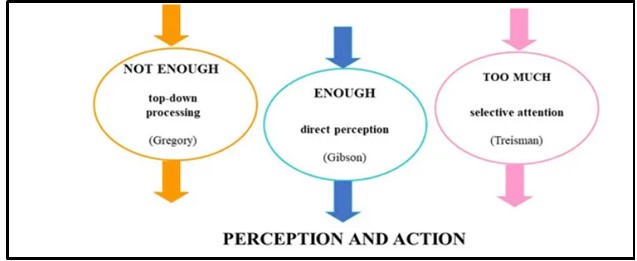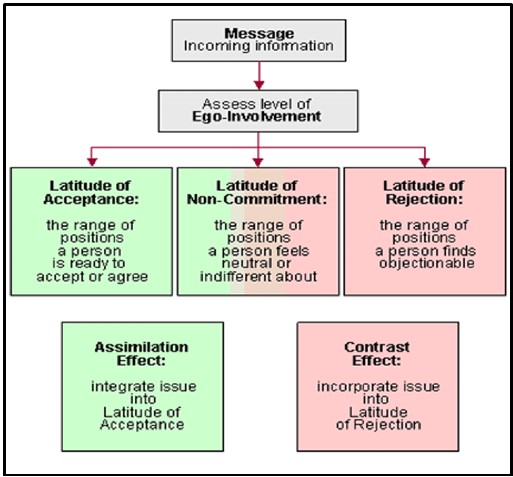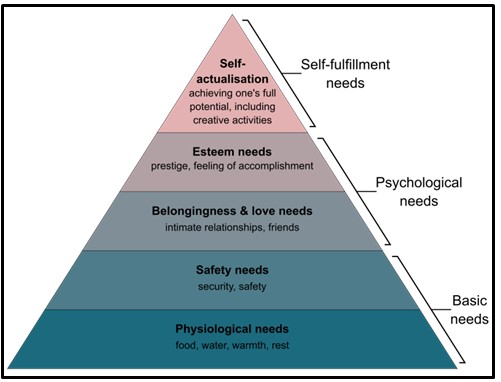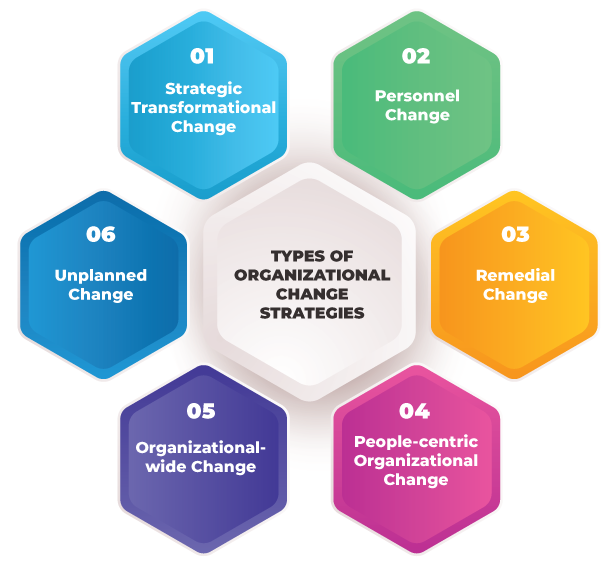HRM11118 Organizational Change and Management Assignment Sample
Introduction
Perception is considered an identification, interpretation, and organisation of sensory information, which helps understand and represent the current environment or information.
All perceptions are involved with personal motivation, and it helps create an experience regarding the present environment or other situation. In this present assignment, a relationship between the organisation and its employees will be built to identify the perception of individual employees.
Based on the presented case study, concepts to contemporary issues within business settings have been included. Moreover, it draws parallels between motivation and attention theories with the present organisational situation. Apart from this, independent opinion has been built up in order to balance the perception and motivation of individuals in the retail industry.
Main Body
Establishing key issues
Motivation is considered as a process that guides, maintains and initiates behaviour of oriented goals. As described in the given case study, employee motivation is regarded as the main critical issue that negatively impacts every industry.
As per the present case study, Mr Simon is a line manager in the UK’s retail industry, who has spent 12 years in the mentioned service. In the last three years, he has been rejected for post-promotion three times, which negatively impacts his mind. Other employees got promotions due to their better formal qualification and other general appearances.
This situation has a severe lousy impression on Mr Simon’s working efficiency and his ability as well (Quested et al. 2017). http://HRM11118 Organizational Change and ManagementThis situation shows every employee needs proper motivation and communication with their particular and respective leader.
On the other hand, several key issues have also been found from the present case study of Mr Simon regarding working behaviour and organisational changes. As stated by Kovach (2018), motivation has a significant impact on the behaviour of an individual employee, which helps to increase a company’s economic value.
Moreover, every employee should get a promotion based on their experience and personal development as well. In this case, leaders are not perfectly playing their role, which leads to different perceptions and de motivation of employees.
Definition of fundamental terms
The present case study showed a relationship between perception, Attitude and motivation of every individual employee of the UK’s retail industry. This current case study describes three fundamental terms that are motivation, Attitude and perception.
Motivation is explained as a process that guides, maintains and initiates behaviour of oriented goals. As stated by Ștefan, Popa & Albu (2020), an Effective leadership strategy is an important thing that helps to build employee’s motivation by developing several essential skills and personal effectiveness. However, effective leadership can motivate employees and other stakeholders to work for the company so that it could achieve future goals.
Motivation is a term used for improving organisational behaviour and personal effectiveness as well.
Perception is considered an identification, interpretation, and organisation of sensory information, which helps understand and represent the current environment or information.
As stated by Velmurugan & Sankar (2017), setting goals or vision benefits sets perception integration for any industry, including UK’s retail industry. Perception and framing is a crucial part of human communication, which changes with the influence of an individual’s observation, ignorance in the world around them.
On the other hand, in the term of psychology, Attitude is explained as a set of emotion, behaviour and belief towards a particular human being, situation or organisation.
As stated by Odegaard, Knight & Lau (2017), employee’s behaviour has a significant impact on commercial business, which helps that company for achieving its future goals. The present case study shows employee’s attitude changes depending on employee motivation.
Background and significance
In the present case study, perception and employee motivation have a significant role in organisational management and change situation. Mr Simon is a line manager in the retail industry of the UK, who has spent 12 years in the mentioned service.
Apart from this it showed Mr Simon is a very hardworking and diligent worker and is highly regarded by his team members and replacing his skills and abilities will be extremely difficult. Background of case study is described as employees not getting proper motivation from their influential leaders, which have a substantial negative impact on current situation of retail industry.
Employee perception and behaviour have a significant role in employees that help them to increase their personal effectiveness and the company’s economic value as well.
As stated by Jolley & Douglas (2017), an effective leader has a massive role in a workplace in order to communicate with his team members or colleagues so that he can understand the significant changes inside a workplace. Moreover, an effective leadership strategy is needed to motivate employees for improving their personal effectiveness.
Theoretical Review
Retail industry is considered as a significant industry where the number of working employees is always higher than in other industries. As stated by Chong & Proctor (2020), different perception and behaviour have been shown where employee number is generally high. In this present case study,
it showed additional employees are working in a retail industry whose have different skills and educational value whereas Mr Simon has the highest experience of 12 years from other employees working in that organisation.
As compared with Gibson theory of perception, it suggests perception is involved in mechanisms forged of innateness with the help of evaluation, whereas no learning procedure is required (Chong & Proctor, 2020).http://HRM11118 Organizational Change and Management

Figure 1: Concept of Gibson theory of perception
(Source: Chong & Proctor, 2020)
In relation to present case study, it showed employees need proper communication with team leaders. In comparison with the present case of Mr Simon, he needs adequate and accurate knowledge perception by developing a formal relationship with other employees and team leaders as well.
On the other hand, present case study sheds light on the path of behaviour and Attitude that is directly connected with the industry’s economic value.
As stated by Futrell, Gibson & Levy (2020), Social-judgement theory help to identify self-persuasion, which means an individual’s positions depend upon three things, including personal anchor, alternatives and ego-involvement.

Figure 2: Concept of Social-judgement theory
(Source: Futrell, Gibson & Levy, 2020)
In the context of the present case study, Mr Simon grows an ego-involvement of not getting promoted by having an experience of 12 years, whereas new employees are getting encouraged for their better qualification skills.
Besides, motivation creates a significant influence on employee’s working behaviour and organisational changes.
As stated by Mallia et al. (2019), Maslow’s hierarchy of needs theory is considered as a motivational theory that worked with psychological differences with human needs and other present situations faced by an individual.

Figure 3: Concept of Maslow’s hierarchy of needs
(Source: Mallia et al. 2019)
As compared with the present case study, Mr Simon faced various problems from the current rules of the organization, whereas the company could not satisfy his basic needs. It has a significant positive role in identifying problems criteria of individuals that they are facing from their current situation.
Concepts to contemporary issues
Contemporary issues of a given case study could be described as a lack of effective leadership strategy, which has a negative role in developing an employee’s effectiveness.
Case study of Mr Simon’s working area showed he has worked with an organisation of the retail industry for the last 12 years and not even getting any promotion. In addition, it describes other employees who get promotions based on their educational qualification whereas Mr Simon does not even get any promotions having a good experience in the company. Contemporary issues of this present case study showed an effective leadership strategy is needed for maintaining employee motivation within a company (Futrell, Gibson & Levy, 2020).http://HRM11118 Organizational Change and Management
On the contrary, an effective leadership strategy is an important thing that helps to build employee’s motivation by developing several important skills and personal effectiveness.
As mentioned by Boer & Lesmana (2018), leaders represent the central backbone of any system, and therefore improper leadership skill might hamper the entire process.
With the help of proper leadership strategies, employees get the chance to know the changes and also the reason behind these changes correctly. Moreover, effective leadership can motivate employees and other stakeholders to work for the company so that it could achieve future goals.
Applying model and theories of organisation
As per present case study, several factors affect organisational behaviour, which has a negative impact on employee’s working effectiveness. Every organisation needs a particular and effective change in the workplace which helps to increase the stagnant growth of a company. Several theories and models help to increase company’s economic value by motivating their employees.
Gibson theory of perception shoe employees needs proper communication with team leaders so that they could easily make a conversation with them. Social-judgement theory showed employees need to satisfy their basic needs, whereas they have to focus on increasing their self effectiveness in the competitive market.
Besides, Maslow’s hierarchy of needs describes employees’ need to find out what exact problem they are facing in the current situation. Moreover, company employees should build up their effectiveness for holding a promotion in an organisation (Mallia et al. 2019).http://HRM11118 Organizational Change and Management
Leaders play an important part in developing employee motivation as they know employee’s strengths and weaknesses. However, these theories and models help to identify what changes a particular industry or company needs to increase their economic value and sell growth.
Parallels between theory and practice
Current situation of every company or industry depends on employee’s effectiveness, customer satisfaction, proper support from suppliers and others which help the company to stand strong in any situation.
As compared with a present case study of Mr Simon, this three theory helps company managers to identify are exact reasons for employee’s demotivation (Islam et al. 2018).http://HRM11118 Organizational Change and Management On the other hand, perception and attitude theory helps to understand who changes and failures have an impact on an employee’s mind.
Motivation theory helps to set a mind of developing employee’s effectiveness which helps employees to work more efficiently (Pandey, Singh & Pathak, 2019).http://HRM11118 Organizational Change and Management Every organisation needs a particular and effective change in the workplace which helps to increase the stagnant growth of a company.
As compared with all these motivation, attention and perception, it helps to develop a proper organisational plan for an individual industry. In the present case study, these theories help Mr Simon to understand what the exact reasons he is getting rejected are.
Building independent opinions
It is highly important to set a proper vision before incorporating any new changes within an organisation.
As stated by Islam et al. (2018), vision sets the perception and thus clears out the goal of employees. Improper vision would lead to improper integration of the system, and thus, the entire process might fail. Therefore, the retail industry needs to set a goal for every employee, which they need to achieve for further promotion.
Proper training about the work process and the company’s mission and vision help to motivate employees to work for the company.
According to Yahya et al. (2019), adequate and proper training also helps to improve employees’ motivation skills which have a positive impact on achieving a company’s economic goal as well. However, the retail industry needs to give proper training to their employees so that they could properly understand what they need to do for the company.
In order to motivate employees for their future work and effectiveness, the most vital step that any organisation needs to improve its leadership strategy.
As stated by Takupiwa & Shelfa (2019), leaders represent the major backbone of any system, and therefore, improper leadership skill might hamper the entire process. As per the present case study, the company management needs to develop its leadership strategy.
Conclusion
The overall assignment can be concluded as Employee motivation, Attitude, and perception have a huge impact on UK’s retail industry. The present case study showed an employee faced several problems regarding his promotion within a retail company.
As compared with several theories such as Gibson theory of perception, Social-judgement theory of employee’s Attitude and Maslow’s hierarchy of needs of motivational theory describe employees need proper communication with team leaders so that they could easily make a conversation with them.
Moreover, employees need to develop their work effectively to help them to achieve future promotion in the retail industry. Only experience does not create a room for employee promotion where employees need to develop their working ability for the company.
An independent opinion has also been provided, which shows how company managers need to develop a plan for fighting against employee’s negative working habits. Opinion based on developing proper effective leadership strategies which help to create a great impact on employee’s motivation.
Reference list:
Boer, R. F., & Lesmana, D. (2018). Eksplorasi Faktor Beliefs Dan Attitudes: Kajian Terhadap Social Judgement Theory Di Era Media Digital. Bricolage: Jurnal Magister Ilmu Komunikasi, 4(01), 051-063, Retrieved from: https://journal.ubm.ac.id/index.php/bricolage/article/download/1651/1390
Chong, I., & Proctor, R. W. (2020). On the evolution of a radical concept: affordances according to gibson and their subsequent use and development. Perspectives on Psychological Science, 15(1), 117-132, Retrieved from: https://journals.sagepub.com/doi/pdf/10.1177/1745691619868207
Futrell, R., Gibson, E., & Levy, R. P. (2020). Lossy‐context surprisal: An information‐theoretic model of memory effects in sentence processing. Cognitive science, 44(3), e12814, Retrieved from: https://onlinelibrary.wiley.com/doi/pdf/10.1111/cogs.12814
Islam, M. A., Jantan, A. H., Rahman, M. A., Hamid, A. B. A., Mahmud, F. B., & Hoque, A. (2018). Leadership styles for employee empowerment: Malaysian retail industry. Journal of Management Research, 10(4), 27-40, Retrieved from: https://scholarworks.waldenu.edu/cgi/viewcontent.cgi?article=6966&context=dissertations
Jolley, D., & Douglas, K. M. (2017). Prevention is better than cure: Addressing anti‐vaccine conspiracy theories. Journal of Applied Social Psychology, 47(8), 459-469, Retrieved from: https://kar.kent.ac.uk/60913/1/Jolley%20Douglas%202017%20Intervention.pdf
Kovach, M. (2018). A review of classical motivation theories. Journal of interdisciplinary studies in education, 7(1), 34-53, Retrieved from: http://ojed.org/index.php/jise/article/download/1059/669
Mallia, L., Lucidi, F., Zelli, A., Chirico, A., & Hagger, M. S. (2019). Predicting moral attitudes and antisocial behavior in young team sport athletes: A self‐determination theory perspective. Journal of Applied Social Psychology, 49(4), 249-263, Retrieved from: https://journals.sagepub.com/doi/pdf/10.1177/1948550617709827
Odegaard, B., Knight, R. T., & Lau, H. (2017). Should a few null findings falsify prefrontal theories of conscious perception?. Journal of Neuroscience, 37(40), 9593-9602, Retrieved from: https://www.jneurosci.org/content/jneuro/37/40/9593.full.pdf
Pandey, P., Singh, S., & Pathak, P. (2019). Factors affecting turnover intentions in the Indian retail industry. International Journal of Human Resources Development and Management, 19(2), 166-182, Retrieved from: https://www.researchgate.net/profile/Pallavi_Pandey3/publication/330331956_Factors_affecting_turnover_intentions_in_the_Indian_retail_industry.pdf
Quested, E., Ntoumanis, N., Thøgersen-Ntoumani, C., Hagger, M. S., & Hancox, J. E. (2017). Evaluating quality of implementation in physical activity interventions based on theories of motivation: current challenges and future directions. International Review of Sport and Exercise Psychology, 10(1), 252-269, Retrieved from: https://espace.curtin.edu.au/bitstream/handle/20.500.11937/29892/246363_246363.pdf?sequence=2&isAllowed=y
Ștefan, S. C., Popa, Ș. C., & Albu, C. F. (2020). Implications of Maslow’s hierarchy of needs theory on healthcare employees’ performance. Transylvanian Review of Administrative Sciences, 16(59), 124-143, Retrieved from: https://www.rtsa.ro/tras/index.php/tras/article/viewFile/624/612
Takupiwa, N., & Shelfa, T. C. (2019). Collective bargaining: a catalyst for dispute resolution between employers and employees in the retail industry in urban Mutare. Ushus Journal of Business Management, 18(1), 1-13, Retrieved from: http://journals.christuniversity.in/index.php/ushus/article/download/2114/1713
Velmurugan, T. A., & Sankar, J. G. (2017). A comparative study on motivation theory with Maslow’s hierarchy theory and two factor theory in organization. Indo-Iranian Journal of Scientific Research, 1(1), 204-208, Retrieved from: https://www.researchgate.net/profile/Surabhi_Singh3/publication/338141924_Examining_Maslow%27s_Hierarchy_Need_Theory_in_the_Social_Media_Adoption/.pdf
Yahya, S. F. H., Hashim, N. A., Bahsri, N., & Dahari, N. A. (2019). The Effect of Sales Promotion Strategy on Online Fashion Shopping Behavior among Employee of Sahawan Sdn Bhd. Global Business and Management Research: An International Journal, 11(2), 1-13, Retrieved from: http://www.gbmrjournal.com/pdf/vol.%2011%20no.%202/V11N2_2019.pdf



Your article gave me a lot of inspiration, I hope you can explain your point of view in more detail, because I have some doubts, thank you. 20bet
What’s up, this weekend is fastidious designed for me, since this occasion i am reading this great educational piece of writing hereat my home.
https://suba.me/